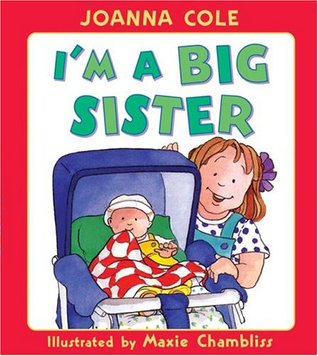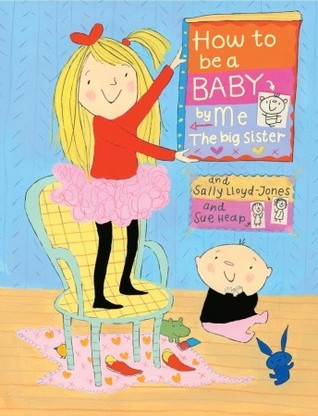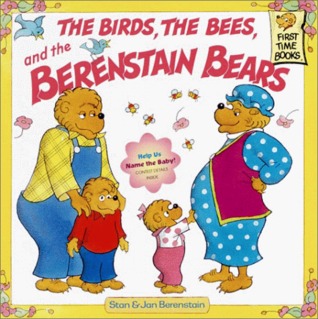
One child was so fun, we decided to have another one. This time, we feel a little more prepared. We know how to change diapers and feed the baby (FED is best), and we have all of the necessary equipment leftover from our daughter’s infancy. So instead of collecting bottles, onesies, and a crib to prepare for a baby, we’re focusing mostly on the emotional preparation of adding another tiny human to our family.
While my husband and I consider how a second baby will affect our marriage, work lives, and overall sanity, we’re paying the most attention to how this life change will affect our 2-year-old daughter. We’ve talked with her about the baby and how special it is that she gets to be a big sister.
However, Grace is two. She thinks a monster lives in our attic. The highlight of her daily life is a close tie between getting to watch Paw Patrol and counting bedtime kisses from Mom and Dad. (Though TBH, that’s a highlight of my daily life right now, too.) So when we tell her a baby is joining us soon, she thinks that means next week. When we ask where the baby is growing, sometimes she says “Mommy’s belly,” but sometimes the answer is school, Grandma’s house, or the playground. We think she has an idea of what the baby will look like and how it will act, but we don’t think she understands just how much Baby 2.0 is going to rock her world.
Thankfully, our village has offered some great advice about how to prepare her for her little sibling. Here are some of the things we’re doing to aid in preparing for a baby:
Reading Books About Baby Siblings
I’m a Big Sister by Joanna Cole
 Based on how many copies of this little tome I’ve spotted at the library, thrift stores, online marketplaces, and Little Free Libraries, this must be a new classic for children being promoted to big sister status. Rightfully so, too: It’s a cute story in the voice of a big sister who proudly introduces the reader to her baby sibling, explains all they can and cannot do, and looks forward to all the fun they’re going to have together. The narrator also reiterates that she is still special to Mommy and Daddy because she’s the only version of herself in the world.
Based on how many copies of this little tome I’ve spotted at the library, thrift stores, online marketplaces, and Little Free Libraries, this must be a new classic for children being promoted to big sister status. Rightfully so, too: It’s a cute story in the voice of a big sister who proudly introduces the reader to her baby sibling, explains all they can and cannot do, and looks forward to all the fun they’re going to have together. The narrator also reiterates that she is still special to Mommy and Daddy because she’s the only version of herself in the world.
We’ve read this book many times before bed while waiting for food at restaurants, or while having a quiet moment during the day. It’s nice that the baby in the book isn’t gender-specific, so the story works whether you’re expecting a boy or another girl. We ask our daughter if she plans to help baby sibling learn how to eat pizza, how to read books, and how to pet our dog gently – an extension of the things the main character does with her baby sibling, customized to our daughter’s likes and our family’s canine companion.
How to Be a Baby … By Me, the Big Sister by Sally Lloyd-Jones

In a word, this book is hilarious. The big sister tells her new baby sibling-like it is: Books are for eating, not reading. You don’t know how old you are or if you’re male or female. Pacifiers are to keep you from screaming. (Preach!) But when you’re older, you’ll understand all these things, and hopefully, you won’t need that paci.
We’re trying to set realistic expectations for what our new baby will (and won’t) be able to do so that our daughter won’t expect the baby to build block towers with her right away, or question too much why the baby is crying yet again. This book has been a fun way to reiterate why the baby won’t be interested in Paw Patrol at first while reassuring our daughter that eventually their tastes will mature and they’ll be able to enjoy fine entertainment with her soon enough.
The Birds, the Bees, and The Berenstain Bears by Stan and Jan Berenstain

Don’t let the title put you off; this book doesn’t go into specifics about how a baby is conceived, and it very, very gently explains how a baby grows and comes out without actually telling how it comes out. Sister Bear has a lot of questions about the baby growing in Mama’s belly, so Mama lets her attend one of her doctor appointments. They talk about how there are males and females, and how babies are born with the help of a doctor. The book ends with the excitement of the cubs watching Mama and Papa go to the hospital while they stay home with a sitter, then receive a phone call from Papa that the baby has been born and everyone is healthy.
Considering our daughter’s maturity level, we hope this book has helped her understand why my stomach is so large and why it’s difficult for me to pick her up. We also hope that when the big day arrives and we have to go to the hospital, she’ll remember that Sister and Brother Bear stayed home until the baby was born, and that’s perfectly normal. Their visit to the hospital to meet the baby at the end of the book has also allowed us to talk with Grace about what visiting the hospital will be like and how she’ll need to behave.
Roleplaying
Our daughter has recently become interested in playing with baby dolls, so we’ve taken advantage of that to show her how to properly hold a baby, how to feed a baby a bottle, and how to talk to a baby. (Shrieking is currently one of her favorite things to do.) Does she reliably cradle the doll in a football hold? Of course not, but we’ll supervise her with the real baby anyway. Showing her how a baby eats from a bottle and role-playing some conversations with the doll (“Hello, baby! How are you today? I’m your big sister!”) gives her some tangible practice with a surrogate baby before the real one arrives. We hope this behavior practice will make interacting with our live baby less intimidating.
We’ve been encouraging her to be gentle and to care for her stuffed animals as well. Does she still throw them across the room while jumping on her bed? Oh yes! That’s so fun to do! But we have noticed she’s quick to pick them up and give them a hug when we point out that she just hurt her stuffed Olaf or Chewbacca by letting them hit the floor, and then place them gently on a chair or her bed. Again, we’ll be supervising the real baby much more closely than her stuffed animals, so basic awareness that her actions “affect” her toys is a good enough start.
Talking to her about baby
The best advice we’ve been given regarding getting our daughter used to a soon-to-be baby is simply to talk about the baby and how s/he will fit into our lives. We ask Grace where she thinks the baby will sit when we’re eating dinner together at the table. We’ve asked her if the baby can have her old nursery room now that she’s in a big girl bedroom, and when she said yes (phew!), told her how much the baby will like sleeping in the same crib she slept in. We point out other babies we see in public and talk to her about how even though they’re not yet walking or sitting up, they’re watching what’s going on, and they like to be out and about, too.
Some of the questions we ask our daughter as we go about daily life:
- Will she help us feed the baby? S/he will drink from a bottle just like she did! Then we show her pictures of her drinking from a bottle to drive that point home.
- Will she hug the baby when it cries? Babies need lots of hugs, just like she does.
- Will she teach the baby how to pet the dog gently? Our dog is a saint around kids but that doesn’t mean the baby should pull its tail.
- Will she show the baby how to play with her old baby toys? Sharing is important.
- Can the baby have her old room? Thankfully she said yes to that one, even though she didn’t really have a choice.
- Can she talk to the baby and point out things we pass while in the car? Although she now faces forward, the baby will face backward (just like she did!) so she’ll need to help us keep an eye on s/he. Plus, s/he might like hearing about all the fun things Grace sees out the car window.
We’re excited to welcome another child into our family, and we hope she feels our excitement, too. While she’ll probably still feel some jealousy and maybe some anger at being somewhat displaced from the family spotlight, we hope these efforts to introduce the baby ahead of time soften that blow.
What have you done to help your kids in preparing for a baby?

















